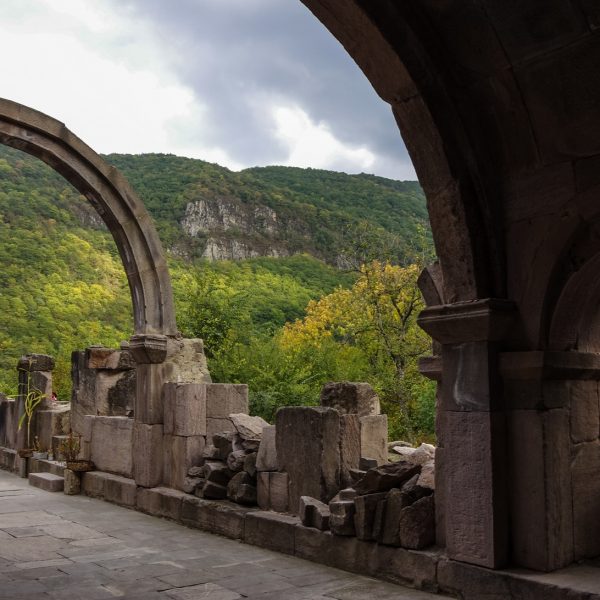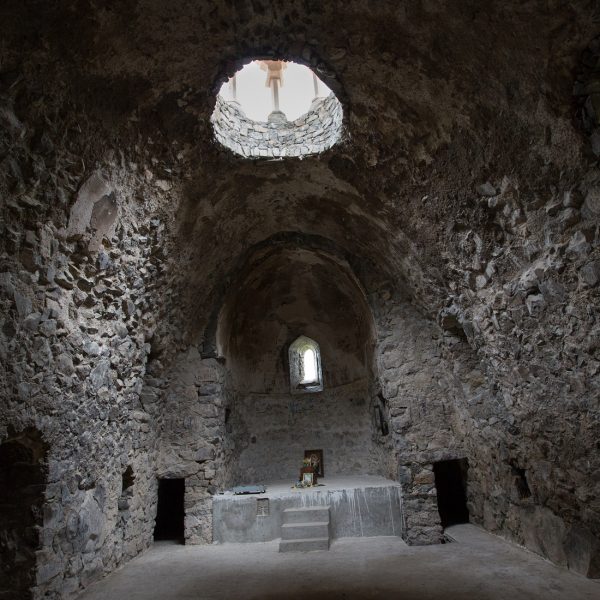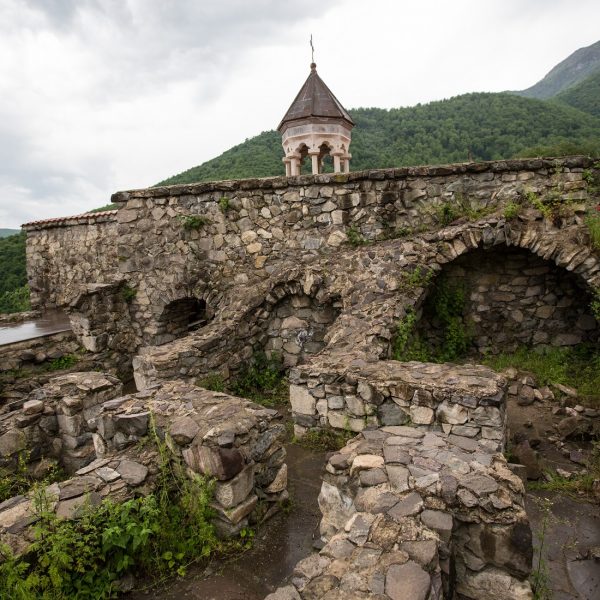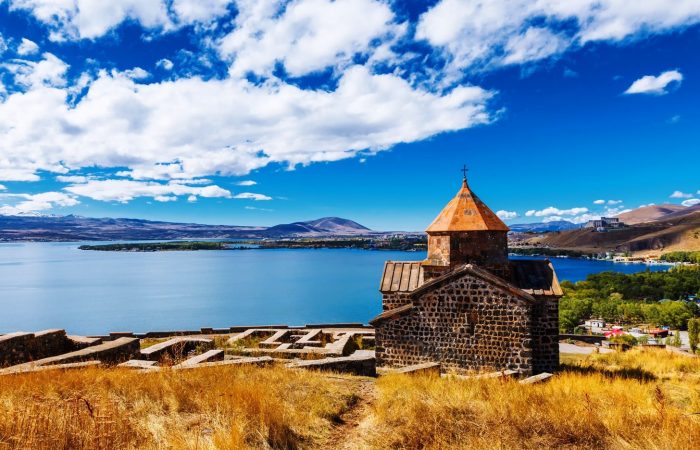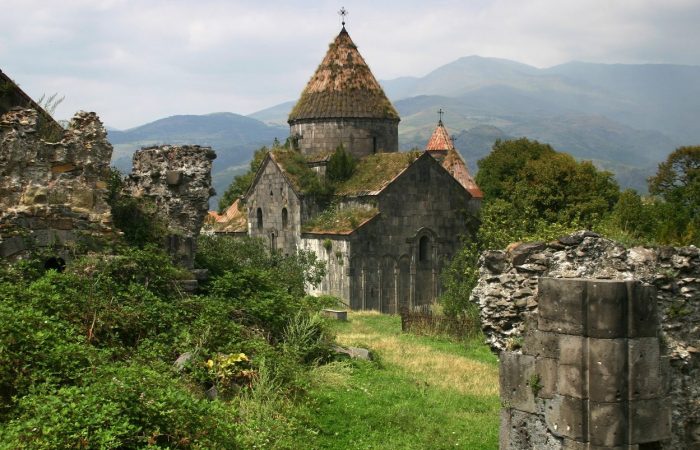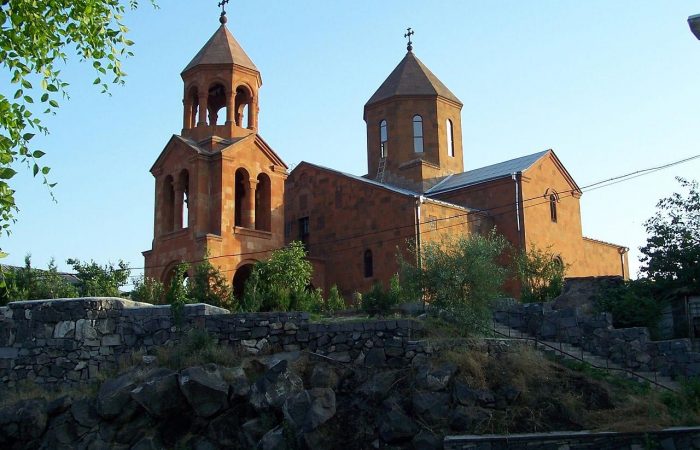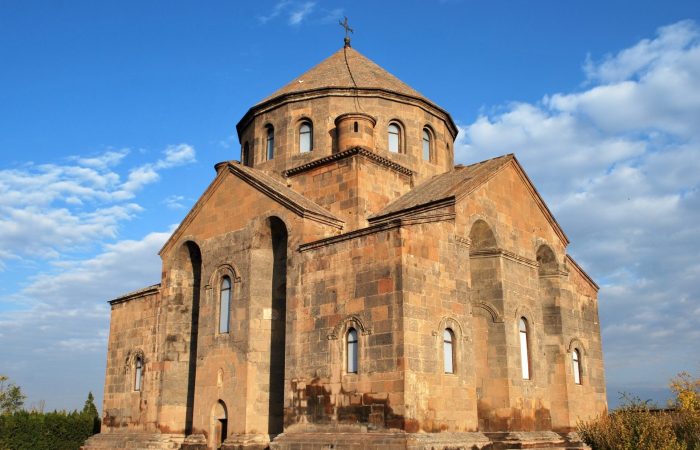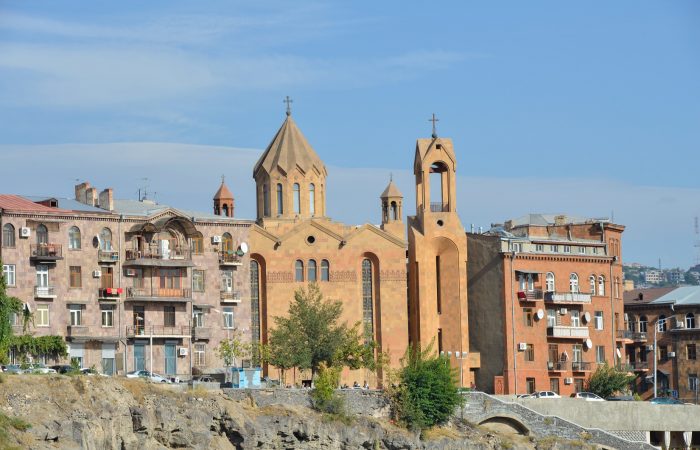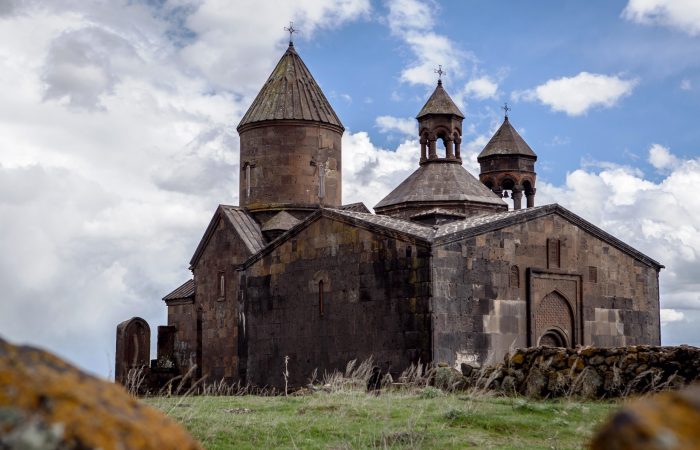Halidzor Fortress: General and Location
The Fortress of Halidzor is located in the city of Kapan, on the right bank of River Voghji. It was initially built in the 17th century to serve as a convent and was later converted to the castle-fortress of melik Parsadanyans (melik was a hereditary Armenian noble title). The family of Parsadanyans was one of the most popular ones in Kapan, and it is assumed that they come from Dzagik, Prince of Syunik. One of the most notable Armenian commanders David Bek also comes from that family.
Halidzor Fortress: About and Around It
Also known as Halidzor Convent, Halidzor Fortress is a walled fortress with several pyramids. In front of the fortress there once were the copper ore and copper foundry of the Parsadanyan family. To the north of the fortress there is the four-column domed sepulcher dating to the 17th century. Around the fortress there is also the Church of Saint Astvatsatsin (Holy Mother), which was built in the 17th century and rebuilt in the 18th century, more precisely in 1723 by David Bek. Adjacent to the northern and southern sides of the church there are a number of dwellings. Also to the north of the church there is the refectory.
To the south-eastern side of the church lies the village of Halidzor. The village includes a 17th century church, which represents a single-nave hall. Close to the church there is the medieval cemetery.
Halidzor Fortress: Brief History
The Fortress of Halidzor played an enormous role during the liberation struggles of Syunik province. Back then David Bek strengthened and rebuilt it and with his 300 soldiers rebelled against the Ottoman forces, the number of which made up 70000. After learning about the various resounding victories David Bek gained over the Ottomans who were his enemies as well, Persian Shah Tahmaz issued an edict upon which he recognized David Bek’s authority over Syunik and granted him a permit to have their own money. On one side of the coin the name of the shah was engraved, and on the other David Bek’s name. It read “Christ’s Servant David.”
While David Bek was alive and led the Armenian forces, they won a myriad of fights, but everything changed after the commander got sick and died. A legend has it, that David Bek was buried in the fortress. After David Bek’s death, the forces split. To be more precise, Ter Avetis and Mkhitar Sparapet (sparapet is a hereditary military rank) didn’t come to terms. As a result, the Ottomans captured the fortress and ruined it.
Halidzor Fortress: Legends
This legend has some resemblance to the unwritten lore of Boloraberd Fortress.There used to be a secret 500 meters long passage stretching from the River of Voghji to the Fortress of Halidzor, which supplied water to the fortress people.
A legend has it that the troops of David Bek were besieged in the fortress. Feeling unable to bring it down, Persian shah kept four of his horses thirsty and then let them go searching for water. He believed that as soon as the horses found water, they would start neighing. And he was right. After the secret clay pipes through which the water was supplied were discovered, they were cut and eventually, the troops of David Bek were left with no water.
There are four tombstones inside the Church of Saint Astvatsatsin. Locals believe that below one of the tombstones there is the tomb of David Bek. The legend has it that after the commander got sick and died, Bishop Hovakim came from the Monastery of Tatev to Halidzor Fortress and performed the burial of the great commander in the gavit of Saint Astvatsatsin Church. It is said that a flower is carved on the tombstone of David Bek, but it was carved on the side that faces the soil. It was done for the enemies not to know which the tomb of David Bek was and not to remove his bones.
The last worth-to-know thing about this fortress is that it’s so much related with David Bek, that it has eventually come to be known as the Fortress of David Bek. In a broader sense, the residents of Armenia more frequently refer to the fortress as David Bek’s fortress or castle and not as Halidzor Fortress. So don’t get confused; those are one and the same fortress.

